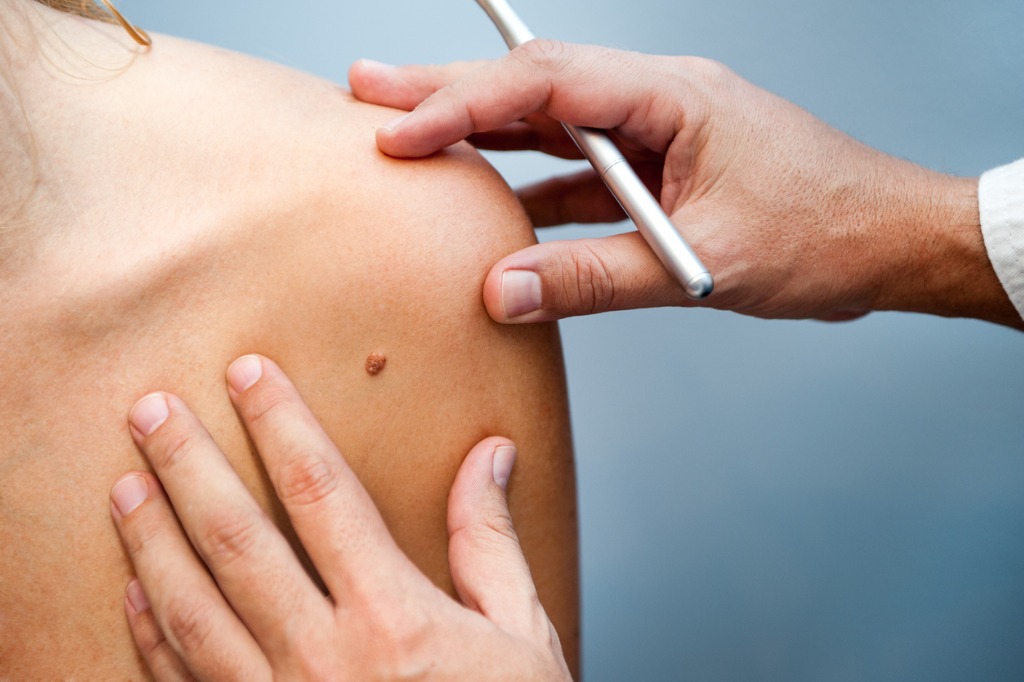
About 90% of nonmelanoma skin cancers are associated with UV radiation from the sun. Therefore, we want to remind our patients of the ways to reduce their risk of developing skin cancer and the importance of getting an annual skin exam.
3 Ways To Reduce Your Risk of Skin Cancer
With 1 in 5 Americans developing skin cancer by the time they reach 70, the risk of skin cancer is relatively high. Thankfully, there are steps you may take to lower your risk.
1. Protect Yourself From the Sun
While limited exposure to the sun has many benefits, such as the production of vitamin D, too much sun may be detrimental to your health. Having five or more sunburns doubles your risk of melanoma, a deadly form of skin cancer.
To avoid sunburn and the harmful effects of UV radiation, be sure to protect yourself from the sun when outdoors. Using a sunscreen with SPF 30 or higher is a great way to shield your skin from the sun. In fact, daily use of an SPF 30 sunscreen may reduce your risk of squamous cell carcinoma by about 40% and melanoma by 50%.
Purchase your medical-grade sunscreen online here.
Moreover, if you are planning a day out in the sun, it might be a good idea to wear a wide-brimmed hat and sunglasses to help protect your eyes, nose, lips, and ears. If you are at the beach or pool, be sure to reapply sunscreen every two hours. You may need to apply sunscreen more often if you are swimming or sweating.
2. Avoid Indoor Tanning
UV radiation doesn’t just come from the sun. It also comes from tanning beds and sunlamps. Indoor tanning devices may emit UV rays times higher than the sun’s peak intensity. Tanning beds have been proven to cause skin cancer, and there is no “safe” tan. Any tan is the result of UV damage to your skin, even if you do not burn. Therefore, it’s best to avoid indoor tanning altogether.
3. Schedule an Annual Skin Exam
Melanoma, if caught early enough, is highly treatable. So much so that when it is detected early, the 5-year survival rate for melanoma patients is about 99%. Unfortunately, more than two Americans die of melanoma every hour, but it doesn’t have to be this way.
An annual skin exam may be your best defense against melanoma. Skin exams give you and your doctor a chance to check for symptoms of skin cancer. You should also perform monthly self-exams of your skin to check for any changes.
Signs you may have skin cancer include:
- A new growth or mole on your skin
- A change in an existing mole, such as changes in color, size, or shape
- A sore that doesn’t heal
- Itching, redness, or pain in an existing mole
What Happens During a Skin Exam?
Undergoing a skin exam is usually a quick and painless process. During the exam, your doctor will check your skin for any changes or irregularities. They may also use a device called a dermatoscope to get a closer look at certain areas of your skin. If an abnormality is found, your doctor may take a growth biopsy to check for cancer cells.
Protect Your Skin with Cascade Eye & Skin Centers
By visiting Cascade Eye & Skin Centers for an annual skin exam, you may be able to prevent skin cancer or catch it in its early stages. In addition, we offer sun protection products to help you avoid the harmful effects of UV radiation.
If you are due for a skin exam or would like to learn more about ways to protect your skin, make an appointment with one of our providers today.



